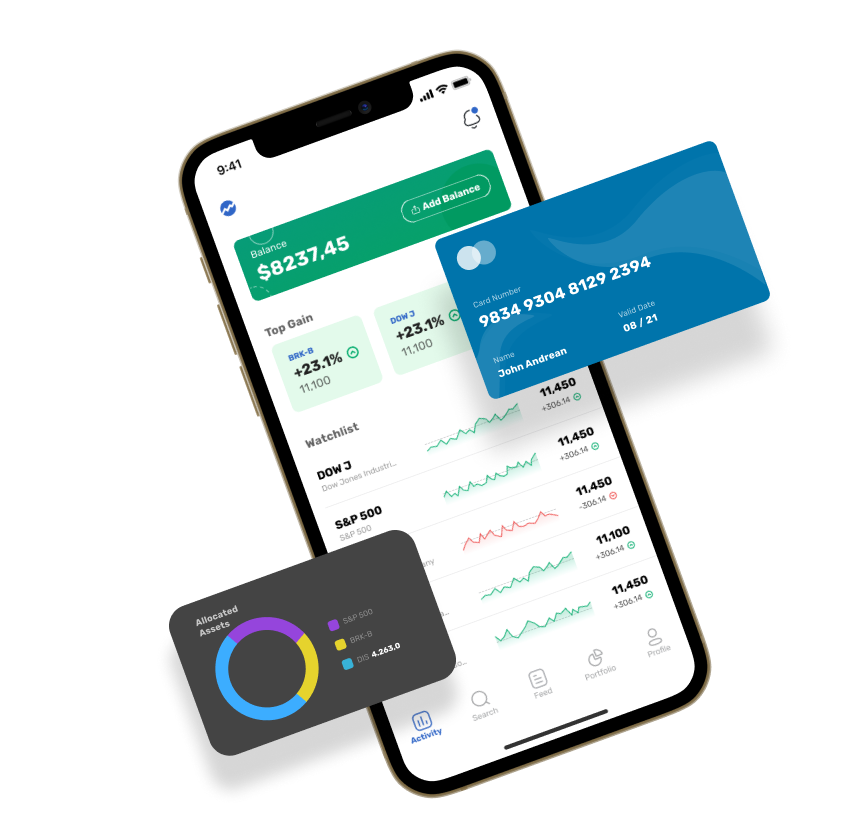20 Recommended Reasons For Choosing AI Stock Investing Analysis Websites
20 Recommended Reasons For Choosing AI Stock Investing Analysis Websites
Blog Article
Top 10 Ways To Assess The Customer Support Of Ai Software For Predicting And Analyzing Stocks
Customer support can be an important factor when choosing the right platform to use for AI analysis and prediction of stocks. The availability of a reliable and responsive customer support service will have a significant impact in solving any issues, maximizing the platform's usage, and ensuring that trading goes effortless. These are the top ten ways to evaluate the customer service provided by these platforms.
1. Evaluation of Support Availability
24/7 Support: Check whether the platform offers round-the-clock support. This is crucial particularly when trading on global markets.
Hours of business If there's no 24/7 support available You should make sure that support is in place during your business hours.
Check if there is support available on holidays, weekends or during closures of markets.
2. Test Response Times
Initial response: Test the support team by submitting a simple test query.
Resolution time: Calculate the length of time required to solve a problem.
Live chat test the responsiveness and efficacy of live chat, if it's accessible.
3. Assess the Support Channels
Multi-channel support: Make sure the platform offers support through different channels (e.g. email telephone call, email live chat, email, or social media).
Make sure that the support channel is reliable.
Self-service solutions: For speedy solutions to problems, check out extensive knowledge bases, FAQs or community forums.
4. Assess the quality of support
Expertise: Support agents must know about the platform and issues related to trading.
Check if the agent is capable of solving complex issues or escalate issues as needed.
Professionalism - Check if support interactions were professional, friendly and efficient.
5. Make sure you are in touch with the Account Manager
Support Premium: Check if institutional users or higher-tiered plans are able to access account managers.
Account managers should offer individualized support and proactive advice.
Relationship Building: Ensure that the account managers you collaborate with are available at all times. It is also possible to build connections over time.
Review Documentation
Knowledge base: Check whether the platform has an easily searchable, well-organized and extensive knowledge base, with tutorials and other guides.
Check the platform's video tutorials and webinars to determine if they are available for visual learners.
API documentation. API documents are important for developers.
7. Examine Peer and Community Support
Forums for users: Check whether a platform offers forums or communities for users to share their tips and thoughts.
Social media groups: Search for groups on social media networks that aren't official (e.g. Reddit. Facebook. LinkedIn), where users are discussing the platform.
Community engagement: Determine whether team members are active participants in forums or discussions within the community.
8. Evaluate Escalation Processes
Issues can be escalated: Make sure there is a procedure in place for escalated unresolved problems to management or support levels.
Follow-up: Make sure that support follows up after solving an issue, to make sure that the issue has been resolved.
Feedback loop: Verify that the platform is collecting feedback from users to enhance its support offerings.
9. Test Support during Critical Conditions
Market volatility: Contact support during times of high volatility to evaluate their ability to respond under pressure.
Simulate a technical issue (e.g. the issue of login or ambiguous data) to see how tech support responds.
Trade execution - Check that support is available to help with urgent trade-related issues (e.g. orders not being executed, delays in execution).
Look at the User Reviews
Online reviews: Use platforms such as copyright G2 or Reddit to read user reviews and measure general satisfaction.
Seek out positive testimonials or cases that highlight the support experience.
Check how the platform responds to complaints and negative feedback.
Bonus Tips
Support during trial period Try the support of the platform during the trial period or demo time to test its quality.
Support for your language Support for your language: If English isn't your primary language, it is best to check whether it's supported.
Training and onboarding. Find out if the platform provides sessions for onboarding or training new users.
With these suggestions You can easily evaluate the customer support of AI platforms that predict or analyze stocks and ensure that you select an option that is quick, efficient and helpful support. A platform that provides excellent customer support can enhance your experience and enable you to make the most of its capabilities. Check out the top rated using ai to trade stocks url for website tips including ai stock trading, ai for investment, stock ai, ai trading, incite, ai investing, best ai for trading, ai stock picker, ai stock trading app, best ai trading software and more.
Top 10 Tips On Risk Management Of Ai Trading Platforms That Forecast Or Analyze Stock Prices
Risk management is an essential element of any AI trading platform for predicting or analyzing stocks to protect your capital and minimize potential losses. A platform that has robust tools for risk management can assist you in navigating the volatile market and enable you to make informed decisions. Here are ten strategies to help you evaluate the risk management abilities of these platforms.
1. Examining Stop-Loss or Take Profit Features
A level that is customizable: You must be able to customize the stop-loss/take-profit levels of individual trades and strategies.
Trailing stops: Check if your platform supports trailing stops, which automatically adjust as the market shifts to your advantage.
If the platform offers stop-loss order guarantees that your position is closed to the amount specified in volatile markets and you are assured of a profitable trade.
2. Assessment Position Sizing Instruments
Fixed amount: Ensure the platform lets you determine the size of your position based on a fixed monetary amount.
Percentage: Check whether you can set your position sizes in percentages of the total value of your portfolio. This will allow you to control risk more effectively.
Risk-reward Ratio: Ensure that the platform allows for setting individual risk-reward levels.
3. Make sure you check for support for Diversification.
Multi-asset trading. Make sure that your platform is compatible with multiple asset classes such as ETFs as well as Forex, Options and Stocks.
Sector allocation: Check if your platform has tools for monitoring and managing the exposure of your sector.
Geographic diversification: Verify if the platform allows trading in international markets in order to spread geographical risk.
4. Evaluate Margin and Leverage Controls
Margin requirements: Make sure the platform clearly states the requirements for margin for trading leveraged.
Limits on leverage: See if the platform allows users to set leverage limits to limit the risk of exposure.
Margin calls - Examine whether your platform alerts you to margin calls promptly. This will prevent liquidation.
5. Assessment Risk Analytics and reporting
Risk metrics. Make sure that your platform has key risk indicators (e.g. VaR, Sharpe Ratio, Drawdown) that are pertinent to your portfolio.
Scenario Analysis: Determine the platform you use allows the capability to simulate different market scenarios to determine the potential risks.
Performance reports: Make sure you check if the platform provides detailed performance reports, including the risk-adjusted return.
6. Check for Real-Time Risk Monitoring
Portfolio monitoring: Make sure the platform allows you to monitor your portfolio in real-time.
Alerts and notifications. Verify whether the platform can provide real-time notification of events involving risk.
Risk dashboards - Examine to see if the platform you are using comes with customized risk dashboards. This will give you an overview of the risks you're facing.
7. Assess Stress Testing and backtesting
Stress testing: Check whether the platform allows you to stress-test your strategies or portfolios during extremely difficult market conditions.
Backtesting. Verify that the platform allows for backtesting, which is the use of data from the past to assess risk and performance.
Monte Carlo Simulators: Verify whether the platform uses Monte Carlo models to model possible outcomes and assess risks.
8. Review Compliance Risk Management Regulations
Check that the platform satisfies the requirements for regulatory compliance (e.g. MiFID II regulations in Europe, Reg T regulations in the U.S.).
Best execution: Check if the platform adheres to best execution practices, ensuring transactions are executed at the most competitive prices to avoid slippage.
Transparency: Verify that the platform has transparency and clear disclosures about risks.
9. Check for User Controlled Risk Parameters
Custom risk rules - Be sure the platform allows the user to set up your own risk management rules.
Automated risk management: Make sure that the platform is able to enforce the rules of risk management automatically based upon your predefined guidelines.
Manual overrides: Verify that the platform supports manual overrides during emergency situations.
User feedback from reviewers and case research
User feedback: Review the opinions of users to determine the platform's capacity to manage the risk.
Case studies: Look for cases studies or testimonials that highlight the capabilities of the platform for managing risk.
Community forums. See if the platform has a vibrant forum for users, in which traders exchange risk management strategies and suggestions.
Bonus Tips:
Trial period: Try a free trial or demo to try out the risk management capabilities of the platform in real-world situations.
Support for customers: Ensure that the platform provides robust support to any questions or issues that are related to risk management.
Check for educational sources.
By following these tips you can determine the capabilities of an AI software for analyzing and predicting stocks to manage risks. This will ensure you pick a system that is safe for your capital, and minimizes the possibility of losses. To stay out of turbulent markets and attain long-term gains in trading it is essential to use a robust risk management software. Check out the best my response for chart analysis ai for website advice including ai investment tools, best ai stock prediction, ai tools for trading, ai stock prediction, ai stock investing, ai tools for trading, best ai stocks, ai for trading stocks, ai software stocks, ai stock predictions and more.